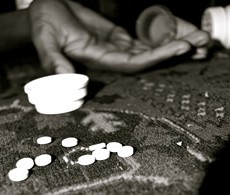Cocaine Addiction & Abuse
Cocaine is a powerful stimulant that has been in use in the United States for over 150 years. In the late 1800s, cocaine was not only legal, but was a primary ingredient of tonics recommended to treat a variety of ailments, including headaches, toothaches, anxiety, and fatigue. Coca-Cola’s earliest formula contained cocaine, and was marketed as a health drink. In 1914, over growing concerns of the highly addictive nature of the drug, the US government made cocaine use illegal for non-medical purposes. Cocaine abuse became practically nonexistent until the 1970s, when the formation of drug cartels in South America drastically increased the availability of the drug. In the early 80s, crack cocaine, the freebase form of cocaine that looks like small pebbles or rocks, became the illicit drug of choice in urban United States. Crack cocaine is smoked rather than snorted, and is more affordable than powdered cocaine. Since the 80s, cocaine and crack cocaine have become popular recreational drugs, second only to marijuana.
Effects of Cocaine
A cocaine high produces a strong sense of euphoria and exhilaration that lasts approximately one to two hours. While under the influence, users report heightened alertness, increased energy levels, and the feeling of invincibility. Once the drug starts to wear off, the crash can lead to depression, agitation, anxiety, and paranoia. Dangerous side effects of cocaine use can include:
- Vomiting
- Respiratory problems
- Heart attack
- Stroke
- Seizures
- Hallucinations
Long term effects of cocaine addiction can include:
- Damage to the nasal tissues
- Depression
- Mood swings
- Tendency towards violence
- Gastrointestinal problems
- Sexual dysfunction
Cocaine Use Among Teenagers
 Cocaine addiction among teenagers was a major problem in the late 70s and early 80s. Usage by teens dropped off through the late 80s and early 90s, before rising again and doubling by 2000. Teen drug abuse is still a popular trend. According to a recent survey by the National Institute on Drugs, cocaine use among teens has been on a declining trend once again over the past decade. However, a significant number of teens, 1 in 9 high school students, still report having used cocaine or crack cocaine. Talking to teens about addiction is important and you can be aware of signs your teen is addicted to cocaine.
Cocaine addiction among teenagers was a major problem in the late 70s and early 80s. Usage by teens dropped off through the late 80s and early 90s, before rising again and doubling by 2000. Teen drug abuse is still a popular trend. According to a recent survey by the National Institute on Drugs, cocaine use among teens has been on a declining trend once again over the past decade. However, a significant number of teens, 1 in 9 high school students, still report having used cocaine or crack cocaine. Talking to teens about addiction is important and you can be aware of signs your teen is addicted to cocaine.
Signs of cocaine addiction in teens can include:
- Decreased appetite
- Change in sleeping patterns
- Runny nose
- Nose bleeds
- Bloodshot eyes
- Behavioral changes
- Declining grades
- Depression
- Irritability
While cocaine addiction is not at levels witnessed in the late 70s and early 80s, it is still quite prevalent in American society. Cocaine is highly addictive, and a user can quickly become tolerant to the drug, necessitating the need for higher quantities of cocaine to achieve the same high as before. While cocaine and crack cocaine addictions are difficult, successful teen addiction treatment options are available. While anti-depressants have been shown to help some individuals break their addiction, residential and outpatient therapy programs retain the highest rates of success.






